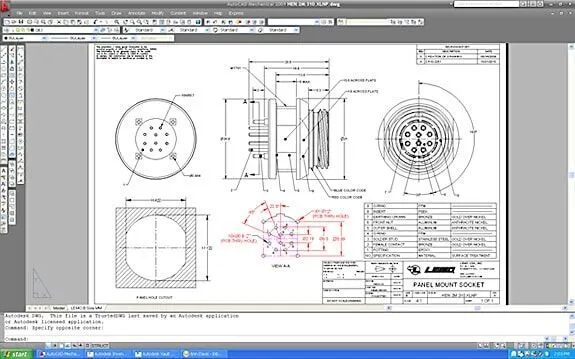Getting Started with BIM

Getting Started with BIM
BIM can transform the way your company does business. The question is will the transformation be perceived as a positive or a negative one by your employees?
It is no doubt that your pre-BIM organizational structure is rooted in CAD technology, and you would do well to remember the initial turmoil that CAD created a pencil and paper drafting world. Back in the 1970’s when CAD software started its migration out of research and into commercial use, many mechanical designers and drafters worried about job security in a computerized world. Most CAD software programs at that point were 2D replacements for drafting. Once the drafting technicians realized that they were not being replaced by computers, but that by becoming computer savvy, they were even more beneficial to their employees, the embraced CAD for its ability to reduce drawing errors and increase reusability of drawings.
Nonetheless, anytime there is a radical change in technology, corporate foundations are tested and leadership needs to rise to the challenges. This is especially true with the kinds of organizational transformation that Building Information Modeling (BIM) presents.
BIM is technically complex and impacts departments far beyond the design and drafting–today’s BIM impacts scheduling and financing, as well as the day-to-day implementation of projects. BIM goes beyond project management into building maintenance, management, renovation, and ultimate building destruction. This “birth to death” building management tool requires knowledgeable leadership to manage and transition an organization from CAD to BIM.
While BIM is a software tool, implementing BIM is not just about loading new software and training everyone on how to use it. BIM creates a fundamental difference between the way you’re doing things now and the way you’ll do them in the future. So, you need to bridge the gap during the period of change, and this will require effective management skills. Understand and accept that you are going to make a significant change to the way you to do business, which demands careful planning and the ability to change attitudes and overcome the fears of the people in your organization who are affected by it. Here are some basic tips to make the process go more smoothly:

Tips for Getting Started with BIM
- Do your research – Find out what BIM solutions are available, and create a “short-list” of the ones that will best fit your needs. Attend BIM events, join BIM User Groups. Talk to your peers and others who have experience with BIM.

- Start small – Choose a small project that will succeed. Use this first project to understand the needs of your organization, and to know where you want to go. Many firms make the initial mistake of starting on a large, highly visible project, which sounds like a good way to get everyone on board. But, consider that all it takes is one highly visible mistake to make everyone skeptical about the new technology. Then your job will be that much harder when you try to get buy-in.
- Get help — You can’t do everything at once and shouldn’t try, so go to the experts and get help. A firm that specializes in CAD services, including BIM can help your firm roll out your BIM production capabilities in order to reduce the learning curve on your first few projects. This will help keep project cost down, increase profitability, save time, and limit the potential for errors during the learning phase.
- Get buy-in — Create a plan and a strategy, then appoint someone internally to lead it. The motivation to adopt BIM must be driven from the top, while the daily work to make the adoption a success will come from the lower ranks — engineers, architects middle managers who follow industry trends. One of these will be the person who interfaces with the CAD services firm and makes use of their consulting services to get the first project completed. Once you and your team have been lead through this process once, then you will have a better idea of the skills needed for the next project.
Remember that while implementing BIM starts with vision and leadership, it progresses through the effort of the employees who will use BIM in their daily jobs. To be effective, a BIM implementation must reach across the entire organization and be embraced by all employees. BIM implementation cannot be viewed as an IT initiative, or an R&D one, or done solely at a project or disciplinary level.
Recent Posts


CAD Outsourcing Doesn’t Have to Be Done In India
CAD Outsourcing Doesn’t Have to Be Done in India Do a Google search for “CAD Outsourcing” and what you’ll find is lots of firms located in India, which is fine if you’re prepared to go off-shore for CAD services. But what if your U.S. based company prefers to stay a...

AutoCAD Fiber Optic Designs & Drawings
Before proceeding forward in explaining the affinity between AutoCAD and Fiber Optic, it would be prudent to rationalize the utility of optical cables. When communicating between systems, either via the internet or via an internal network system, a medium needs to be...

CAD Outsourcing: How to Get the Most Out of Engineering
In today’s competitive market, companies need as much help as possible. If you want to take a larger market share, you can start by outsourcing some of your work. This is a quick way to expand your engineering power without onboarding and training a new staff. This...
